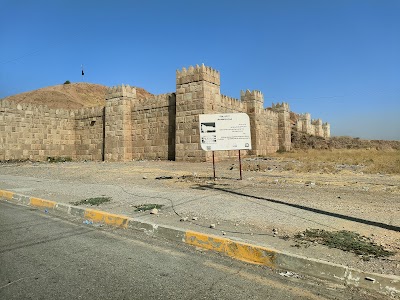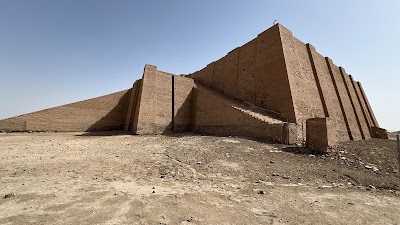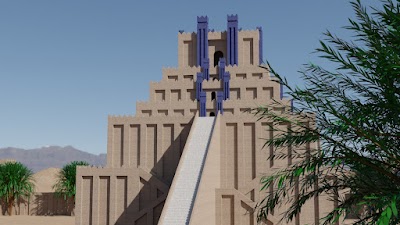Shamash Gate (بوابة شمش)
Overview
Located in present-day Iraq, the ancient city of Babylon was once the heart of a sprawling empire, renowned for its grandeur and cultural significance. Among its many awe-inspiring features, **Shamash Gate** stands as a testament to the ingenuity of this Mesopotamian metropolis. Named after Shamash, the Mesopotamian sun god, this iconic gate welcomes visitors into a world rich in history, myth, and architectural marvels.
Babylon reached its zenith under the reign of **King Nebuchadnezzar II** in the 6th century BCE. It was during this remarkable period that many of the city's most famous structures, including Shamash Gate, were constructed. Serving as one of the principal entrances to the city, Shamash Gate was not merely a passageway but an emblem of Babylon's power and cultural splendor. Constructed of mud brick and adorned with glazed tiles, the gate was richly decorated with symbols and motifs representing various deities and mythological figures.
One of the most striking features of Shamash Gate is its **vibrant and colorful façade**. The intricate tilework depicts lions, dragons, and bulls, each chosen for its symbolic value. Lions represent Ishtar, the goddess of war and love, while dragons are associated with Marduk, Babylon’s chief god. Bulls symbolize Adad, the storm god. This blend of animals across the surface of the gate reflects the city’s efforts to invoke the protection and favor of its patron gods, ensuring safety and prosperity within its walls.
The significance of Shamash Gate extends beyond its aesthetic appeal, impacting the **socio-political fabric** of ancient Babylonian society. Shamash, as the sun god, was believed to oversee law and order. Thus, the gate named in his honor symbolized justice and divinity, reinforcing the notion that Babylon was under divine protection. Visitors and inhabitants alike would pass through Shamash Gate with a sense of awe and reverence, aware they were entering a city that represented the intersection of the mortal and the divine.
Shamash Gate also played a crucial role during **festivals and ceremonial events**. One of the most significant was the New Year festival, where a grand procession would pass through the gate, making its way from the temple of Marduk to the Akitu House, a separate temple located outside the city. This annual procession reaffirmed Babylon’s religious and political structures, symbolizing renewal and continuity.
Despite the passage of millennia, the allure of Shamash Gate endures. Excavations and restorations have revealed much about its original state, allowing modern-day tourists to glimpse the splendor that ancient Babylonians once admired. Walking through the reconstructed gate today, you can almost hear the echoes of history—markets bustling with activity, priests conducting rituals, and citizens gazing on with pride and devotion.
An interesting aspect of Shamash Gate is the **archaeological methods** used in its recovery. Beginning in the early 20th century, extensive German-led excavations unearthed various parts of the gate, which were meticulously documented and partially reconstructed. These findings have been pivotal in understanding the urban layout and architectural ingenuity of Babylon.
Additionally, Shamash Gate has contributed significantly to our knowledge of **ancient engineering techniques**. The use of glazed bricks, fired for durability and luster, showcases the advanced technological capabilities of the Babylonians. This method not only served an aesthetic purpose but also provided resilience against the wear and tear of time, preserving the detailed artistry for future generations to admire.
Visiting Shamash Gate today offers more than just a journey into an ancient past; it provides a **gateway into the cultural and intellectual heights** achieved by Babylon. As you stand before this grand entrance, you will feel a profound connection to the legacy of one of the world’s earliest civilizations. Whether you are an avid historian, an architectural enthusiast, or simply a curious traveler, Shamash Gate promises a captivating experience that enriches your understanding of human heritage.
In conclusion, Shamash Gate is much more than a historical artifact; it is a monumental narrative carved in brick and tile. It encapsulates the essence of Babylon—its gods, its rulers, its people, and its timeless quest for beauty and order. As you consider your travel itinerary, make sure to include this extraordinary gateway, for it is not just a visit but a step back into the epicenter of ancient civilization.






